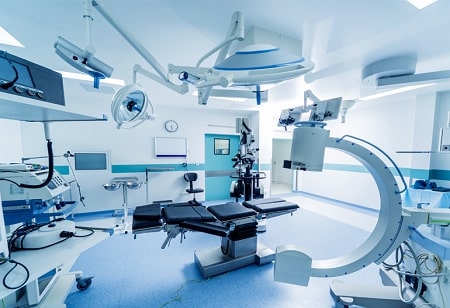
The health care industry has upgraded a lot with the innovations that happen with several technologies and medical equipment. Medical professionals leverage all the relevant ones for the sake of patients, mainly for early detection of the disease, treatments, and even to prescribe the right medication. In ancient times, the challenge was delivering the right decision. Nevertheless, as the doctors had sound knowledge, they strived to take care of the patients and provide them with the right advice. Nowadays, things have become even better because of technologies, equipment, and the advancement of medical concepts, which have made dealing with patients less complicated.
After the pandemic hit the world, online appointments have become of paramount importance and have become more effective with the integration of software and other relevant tools to make the appropriate diagnosis.
Based on the criticality of the patient, the surgery time differs; it could go for long hours or sometimes be short. Currently, while handling surgeries, the most modern medical devices play a vital role in assisting the surgeons in lowering the intricacy of surgery and the time it takes. For a deeper understanding, let us consider a scenario of laparoscopic surgery. A laparoscope is a medical equipment utilized during the procedure. It looks like a thin rod, and a camera is attached to view the abdominal and pelvic cavities through said keyhole.
It helps the patient have a faster recovery and a better result. Laparoscopic surgeries have now made life easier for both the patient and the medical experts and have been effectively used in healthcare for a long time.
The state-of-the-art medical devices help in the early finding and diagnosis of various medical conditions, which enables the specialist to proceed with the treatments. Generally, through a normal examination, the doctors find the issues with the patients and give them the necessary medications. However, diagnosis cannot always be performed in the usual way, and one should rely on the tools for real findings. To exemplify, tools such as CT Scans, X-rays, Magnetic resonance Imaging (MRI), ultrasound, and many others deliver images of internal organs, allowing medical professionals to point out abnormalities and commence with the treatments swiftly.
From the patient's point of view, it might look complex, but it is this complexity that ensures our well-being.
Those days have changed with the arrival of genuine medical devices that help track the progress of patients remotely. There are several symptoms and conditions that can be tracked with devices, such as High blood pressure, Weight loss or gain, Diabetes, asthma, and many others. Back then, for each and every medical need, the patients had to visit the hospital, get the test done, wait until the reports were ready, and interact with the doctor in case of any complications. Now the process has become more streamlined, and patients can feel comfortable at their place.
Yulum Wang said that "Telemedicine will become the core methodology of healthcare delivery in the future. That is where we are going to get the efficiencies we need to provide affordable care" Making patients wait in the hospital doesn't seem to be good, and telemedicine should be leveraged for the sake of patients, depending on their medical conditions.
We have pointed out different sorts of devices that serve the purposes of the patients. Here, the case is entirely different and has a unique way of catering to the needs of patients. There may be extreme medical cases where patients can't swallow food or are not getting adequate nutrients into their bodies. In such circumstances, the infusion pump is a popular device that is used to provide nutrients, fluids, and medicines to the person in need. More importantly, it can be programmed to deliver the correct dosages of medicine at a manageable rate during customizable time intervals. In this way, it also lowers the workload of nurses, and care can be given in an effective way.
The devices have become part and parcel in the lives of medical professionals and patients, saving valuable time for both and paving the way to recovery.
The devices are also capable of handling the continuous monitoring of the patients and allowing them to find their vitals and health parameters. In general, the devices detect heart movements, physical activity, patterns of sleep, and all other basic functions of the body. Retrieving the data from these devices is extremely helpful for medical experts to assess the conditions and take preventive measures if required.
In a nutshell, medical devices have brought significant change to the healthcare industry across the globe and helped improve patient outcomes. Every device should be used in an optimal way so that experts can provide patient-centric care and understand the conditions better.
We use cookies to ensure you get the best experience on our website. Read more...